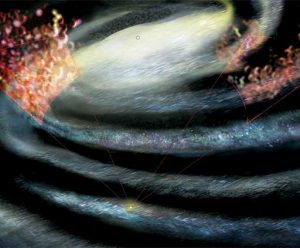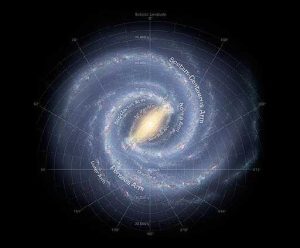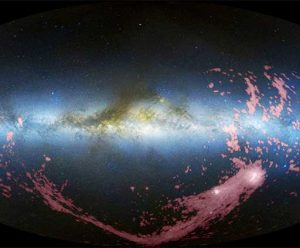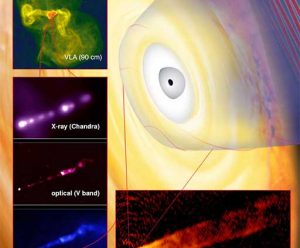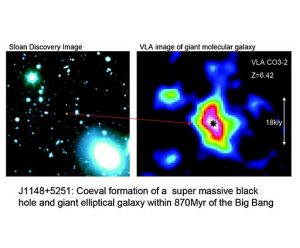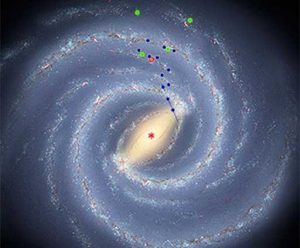A surprising discovery that hydrogen gas clouds found in abundance in and above our Milky Way Galaxy have preferred locations has given astronomers a key clue about the origin of such clouds, which play an important part in galaxy evolution.
New Star-Forming Regions in Milky Way
Astronomers studying the Milky Way have discovered a large number of previously-unknown regions where massive stars are being formed. Their discovery provides important new information about the structure of our home Galaxy and promises to yield new clues about the chemical composition of the Galaxy.
Giant Intergalactic Gas Stream Longer than Thought
A giant stream of gas flowing from neighbor galaxies around our own Milky Way is much longer and older than previously thought, astronomers have discovered.
VLBA Locates Superenergetic Bursts
Using a worldwide combination of diverse telescopes, astronomers have discovered that a giant galaxy’s bursts of very high energy gamma rays are coming from a region very close to the supermassive black hole at its core. The discovery provides important new information about the mysterious workings of the powerful engines in the centers of innumerable galaxies throughout the Universe.
Black Holes Lead Galaxy Growth
Astronomers may have solved a cosmic chicken-and-egg problem — the question of which formed first in the early Universe — galaxies or the supermassive black holes seen at their cores.
Milky Way a Swifter Spinner, More Massive
Fasten your seat belts — we’re faster, heavier, and more likely to collide than we thought. Astronomers making high-precision measurements of the Milky Way say our home Galaxy is rotating about 100,000 miles per hour faster than previously understood.






